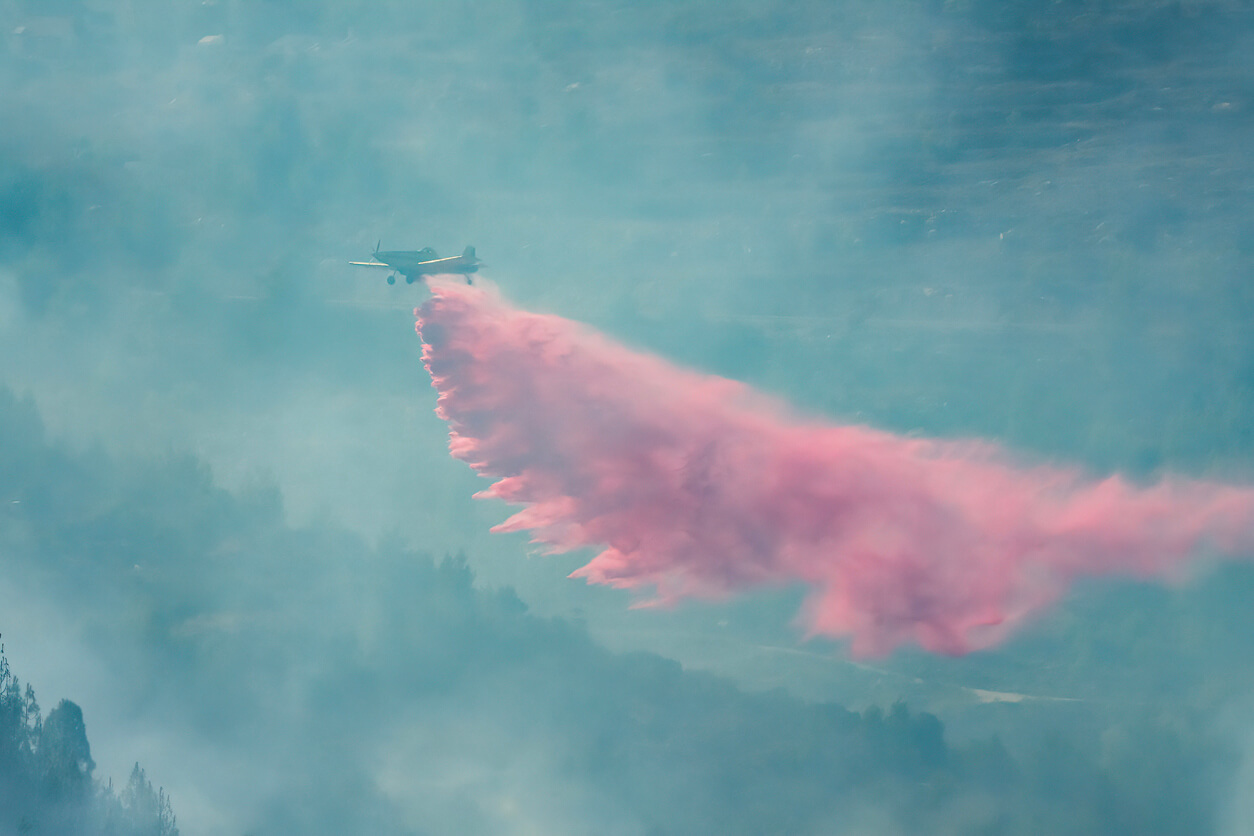Suppressants Used to Fight Wildfires Leave Behind Toxic Metals, Study Says
Editors carefully fact-check all Consumer Notice, LLC content for accuracy and quality.
Consumer Notice, LLC has a stringent fact-checking process. It starts with our strict sourcing guidelines.
We only gather information from credible sources. This includes peer-reviewed medical journals, reputable media outlets, government reports, court records and interviews with qualified experts.

Airdropped fire suppressants are key in fighting wildfires. They coat the surrounding plant life to help prevent the fires from spreading.
But these suppressants, used regularly to contain the California wildfires, may come with serious environmental and health concerns.
A study published in the Environmental Science and Technology Letters has determined that some wildfire suppressants contain toxic metals like chromium and cadmium. These metals may leach into the environment.
Researchers determined that, from 2009 to 2021, over 400 tons of toxic metals may have been released through fire suppression. Previous research had already found that wildfires increase toxic metals in soil and water, but the exact cause was unknown.
“Wildfires are associated with the release of toxic heavy metals to the environment, but until now, it was assumed that these metals came from natural sources like soil,” Principal Investigator of the study Daniel McCurry said in a press release. “We now know that fire retardants may contribute to these metal releases.”
According to CBS News, Perimeter, which manufactures the Forest Service’s fire suppressant, says the fire retardant formula the research is based on is no longer used.
Toxic Metals Concentrations Well Above Drinking Water Standards
One of the primary concerns of this study is the potential risk of toxic metals released via fire suppression contaminating water supplies.
The Forest Service sets up buffer zones where retardant cannot be dropped to keep it away from surface water. Despite this, accidental drops still happen frequently. The study noted that, over 12 years, about one million gallons of retardant were dropped in areas where it could enter the water. Those drops contained over 1,800 pounds of toxic metals.
Of the 14 fire suppression products the study analyzed, all contained at least one metal that exceeded Environmental Protection Agency drinking water regulations.
“While these products are not drinking water sources, concentrations many times in excess of an MCL may indicate the potential for drinking water contamination,” the study stated.
In addition to accidental drops into water, another concern is rainfall. Rain could potentially wash toxic metals from the retardant-treated soil into nearby water reservoirs.
Toxic Metal Concerns Rise as Wildfires Become More Common
Wildfires are happening more often. According to the EPA, studies have shown that the frequency of wildfires, the length of wildfire seasons and the size of areas burned have all risen.
According to the Environmental Science and Technology Letters study, “An increase in seasonal wildfire severity of up to 50% [is] predicted in the next several decades.”
This means that more fire suppressants may be necessary over time, which could increase the chance of releasing toxic metals into the environment.
Even with the newly uncovered information on retardants’ ties to toxic metals, there is not an easy solution.
Fire suppressants are often necessary to fight serious wildfires and can be far more effective than water alone. Airdropping water without adding suppressants may be ineffective since it can quickly evaporate.
The study’s researchers said more research is needed to fully understand the environmental impacts of these toxic metals. For example, it is unknown if they can permeate groundwater.
“Further work should determine the environmental fate of metals released by aerial fire suppression,” the study stated. “… and estimate the extent to which they contribute to human and ecological health risk.”
Editor Lindsay Donaldson contributed to this article.